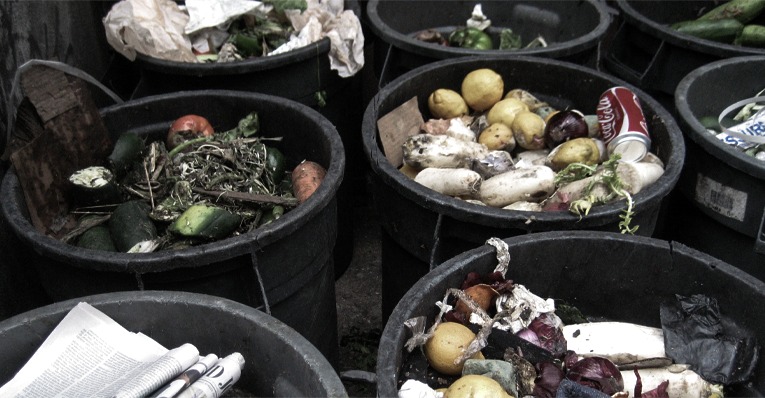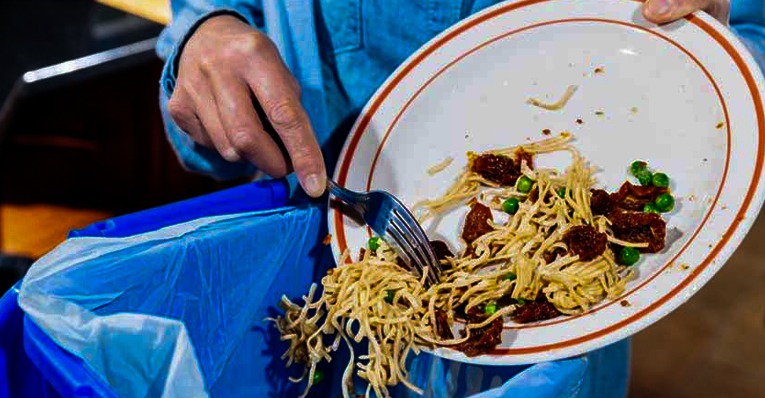Did you know that an average person in UAE wastes 197 kgs per year!? Which is more than double of Europe. About 38% of food is wasted, the numbers rise to 60% during the Ramadan festival, according to Economic Intelligent Unit.
Food preparation cost is the highest cost in a restaurant and estimated at around 30% to 35%. By reducing 3% of your food cost, you can reduce food waste by 50%.

The top reasons for wood waste include overbuying due to ineffective stock control, miscalculated portions, food spoilage due to improper storing, food spillage, refries and improper ingredient storage.
Let us look at some ways to curb food wastage at your restaurant:
- Adopt FIFO
Arrange the ingredients in your kitchen and items that have a short shelf using First In First Out method. Most restaurants overlook this method as materials take longer to be arranged in this method.
But when you ensure that the older items are arranged in the front of the shelf or refrigerator, we ensure that food products are consumed and not wasted simply because of the order arrangement of items.
- Order to par to reduce spoilage
Your previous month forecast or forecast during the same season in the previous year will help you plan your inventory efficiently. Order to par is ordering the minimum quantity of food ingredient required.
Procuring food based on the minimum requirement and a minimum buffer of say 5% would help you keep waste at bay. Also, many inventory management solutions with inbuilt procurement tools automatically generate order to par data.
- Waste Audit
One of the most effective ways to do a waste check. To carry out this method ensure that the waste is always segregated in specific bins in your kitchen. This saves ton of time when you carry out daily waste audit.
At the end of every week, ask your employees to total each type of waste like meat, vegetables, paper goods, aluminum goods etc. Waste that weighs more indicate scope of improvement for the product
- Offer Weekly Specials
Repurpose unused raw ingredients by offering weekly specials and reduce food waste. It is one of the easiest and quickest ways to prevent low shelve life ingredients from getting wasted.
- Use recipe management for consistent portions
Input the measurement of all ingredients the staff uses to cook along with the accurate yield details and also share it with other branches if applicable. Expecting manpower to carry out this task is unrealistic as it complicated, and it requires accuracy to yield results.
When you manage your recipe based on consistent portions for each dish, you can curb wastage to a large extent and also plan inventory efficiently on regular basis.
- Calculate inventory days in hand
The number of days an inventory is stored in your kitchen indicates the demand for the corresponding item on the menu. Items which have low inventory days are your high demand ingredients which require frequent supply from the supplier or distributor. By estimating the inventory supply requirement in advance and ordering with the supplier/distributor can be a huge advantage; your supplier offers quantity-based discounts. You can request for your products to be delivered on regular internals to ensure you receive fresh stock.
- Use a menu tracker
Understanding items that are selling on your menu and those that are not help you plan your inventory effectively and also update your menu based on consumer preferences.
- Zero Waste policy
There are some restaurants that have implemented innovative ways to manage waste. For instance, The Gulou Hotpot located at Al Barsha in Dubai imposed a food wastage fee to customers and this has led to almost 0% wastage at her restaurant.
Training the manpower to monitor food waste with technology and conducting waste audit can save costs at significant levels beyond gratifying one for implementing sustainable and eco-friendly processes to sustain the business.
Also, since a large portion of food goes on waste in restaurants in Dubai that offer over-the-top buffet services, restaurants have redefined their display and refilling options while keeping the variety intact; buffet now display smaller portions of food and is restacked when required.
Another trend catching up is the nose to tail cooking where if the restaurant received a large order for a specific dish, which has meat then a variant dish with that meat is offered for brunch and dinner to reduce wastage. Restaurant Manager monitors wastage and keeps track of the perishable and non-perishable stock

Popular restaurants like Four Seasons and Koya have shifted to table service for everything except appetizers even for a buffet menu to reduce wastage and at the same time ensure customers are served fresh food.
UAE imports 90% of the food for consumption and in spite have record a high food wastage due to various factors. Being home to 200 international cuisine and with some restaurants recognized as the best in the world Dubai has launched many initiatives to curb the wastage.
With the launch of UAE Food Bank in 2017 as a charitable organization under his highness, which has integrated with restaurants, NGOs and food producers to source and distribute in case of excess produce. Also, with the very recent food waste initiative Ne’ma (heralded by Dhabi Crown Prince’s Court, the Emirates Foundation and Ministry of Climate Change and Environment) which co-ordinates between govt. agencies, private sectors, NGOs and society to reduce food loss and waste across the food supply chain.
Food waste costs UAE around AED 13billion. These initiatives conform to the UAEs target of reducing food waste by 50% by 2030 and contribute to global goal of reducing food wastage. According to the Boston Consultancy Group, 1.6 billion tons of food gets wasted and estimates that by 2030 annual food loss and waste will hit 2.1 billion tons which is worth $1.5 trillion.
With the constant increase in price of the produce, supply chain and staffing challenges, the focus needs to be on minimizing costs and reducing food waste. With technology to assist manpower, food wastage can be curbed to a large extend; time and training needs have to be prioritized by the restaurant owners.




